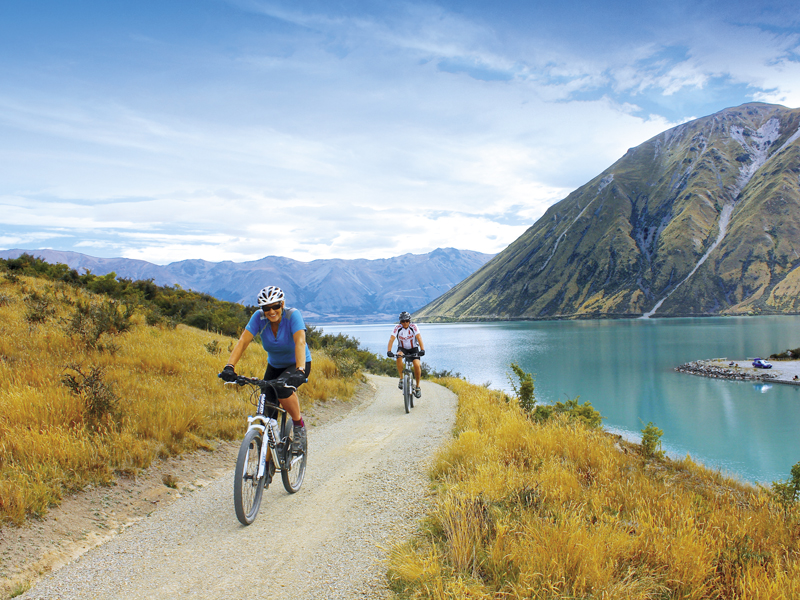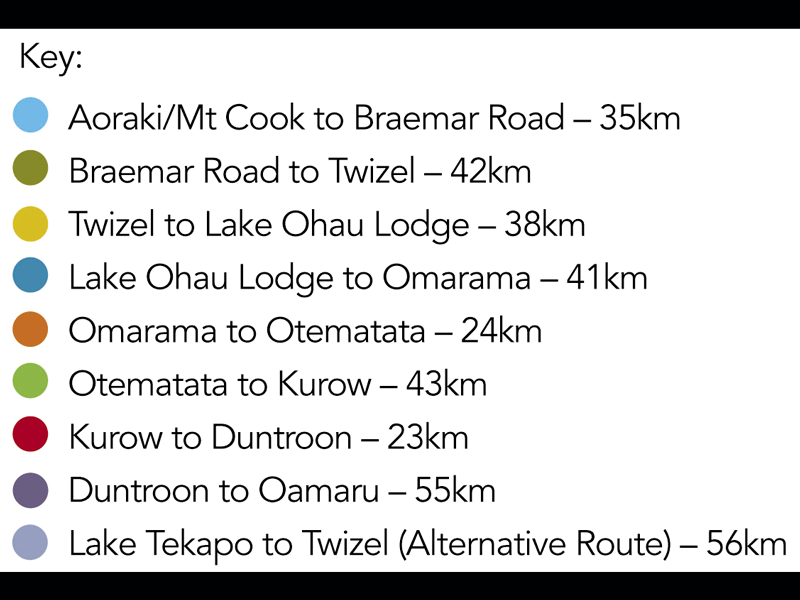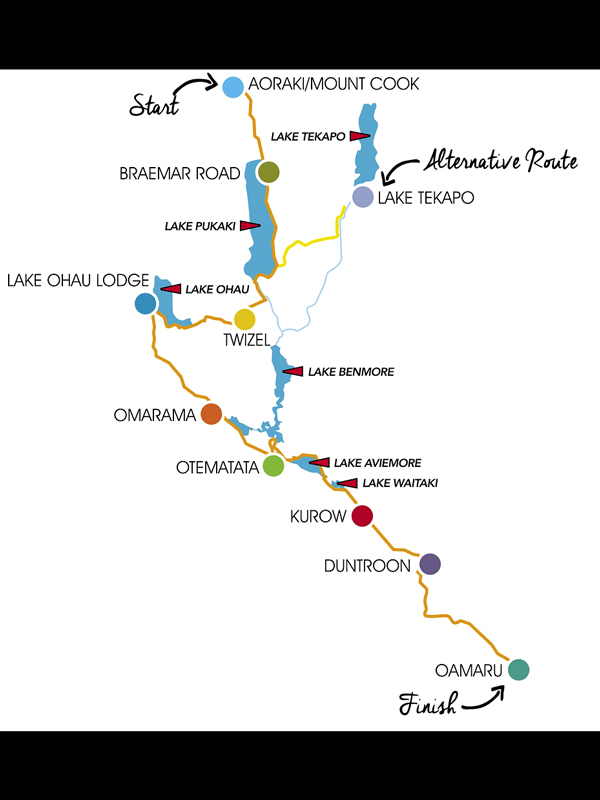The Alps to Ocean Cycle Trail, or A2O, runs from Mount Cook to Ōamaru. Starting at Mount Cook necessitates an expensive five-minute helicopter ride. Choosing the alternative Twizel start, we took eight days to cycle the picturesque, well-marked, 300km-odd trail, a small distance of it onroad.
Cycle Journeys shuttled our luggage, provided information and maps, and we hired its ‘Comfort’ bikes; Avanti Discovery 3 bikes. They were indeed comfortable. My companion chose an e-bike, worried her fitness was lacking. Selecting to switch the electronic assistance on only when needed, she found the ride enjoyable.
Recharging the battery each night meant it never ran out. Aged in our 50s and 60s, we wanted a challenging adventure - but not too challenging. The 24km leg of the trail from Omarama to Otematata and the following day’s 40km leg to Kurow required little cycling skill and low-level fitness.
The two distances also had some of the best scenery. While in the area, we rode to Clay Cliffs - about a 26km return cycle ride from Omarama, some of it on gravel. The cliffs resemble a jagged glacier, albeit splashed and striped in orange and yellow hues, and were formed about four million years ago by ancient glaciers depositing silt and gravel.
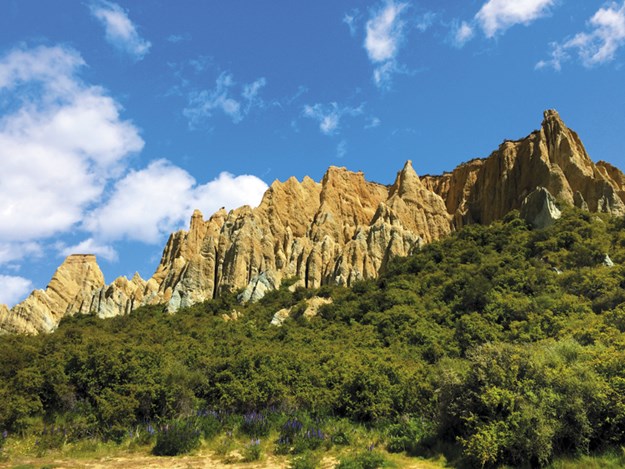 |
Clay Cliffs |
With geological activity and erosion then playing a part, nature created stark ravines and peaks. The ‘wow’ moment comes when entering a narrow opening between the towering cliffs. I felt dwarfed in an amphitheatre of spiky pillars.
Returning to Omarama grimy from riding through plumes of dust thrown up by passing cars, Omarama Hot Tubs, near the Omarama Top 10 Holiday Park (which was where our cabin was) sounded perfect. There were private tubs for 90 minutes or ones with a sauna for two hours. Sadly, they were booked out.
With Omarama only an hour’s drive from Mount Cook, many travellers pass straight through, but it’s worth stopping for. The township is handy to man-made lakes for boating and swimming, and is also renowned as a gliding destination, having some of the world’s best soaring conditions. Trial flights between 30 minutes and 2.5 hours are available.
On to Otematata
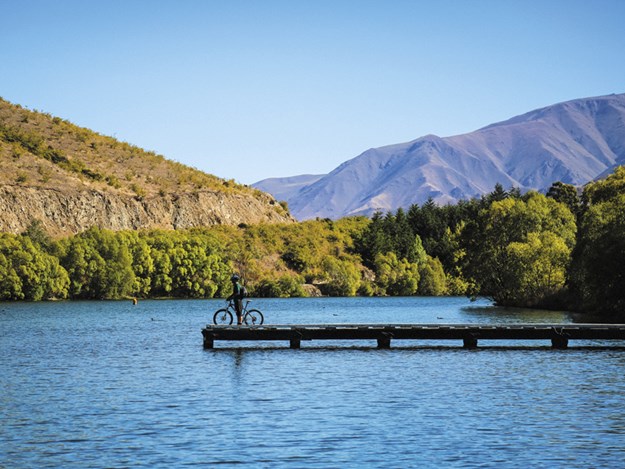 |
Sailors Cutting |
It was reasonably flat riding alongside SH83, Lake Benmore getting closer. We’d only covered 10km upon reaching Pumpkin Point, a small peninsula on its shorelines, but it was hot, and the lake’s glass-like water was temping.
Miniscule fish darted around our legs. Drying off in the sun, we watched several families water-skiing and ski-biscuiting. Back on our bikes, the shade-less lakeside trail brought us to Sailors Cutting, 3km on. Draping willow trees framed the jetty opposite.
I glimpsed caravans tucked among trees before joining SH83, an uphill slog. My e-bike-riding companion waved cheerily as she effortlessly glided by, the bike able to do about 30km/h. My thigh muscles screamed. Thundering trucks passing us were a little frightening but, reaching the crest, the reward was 6km of downhill, a blissful breeze ensuing.
Heat shimmered above the black highway running through almost deserted Otematata. The only patrons in the bar at Otematata Eatery, Bar and Lodging, we refreshed with ice-cold cider and beer.
Across the road at the Otematata Holiday Park and Lodge, only three caravans and a campervan were in residence. Our lodge flats were new, the historic lodge built for dam workers possibly never redecorated or maintained, the swimming pool gloriously cool.
In the mid-1960s, Otematata, constructed for Aviemore and Benmore Dam workers, had a population of about 4000. Today it’s maybe 200, many homes owned by holidaymakers. In the cooler evening, the hour-long, flat Otematata Wetlands Walkway was tranquil and generally shady with native trees, views of Lake Aviemore and boats semi-hidden beneath willows on an inlet.
Kurow-bound
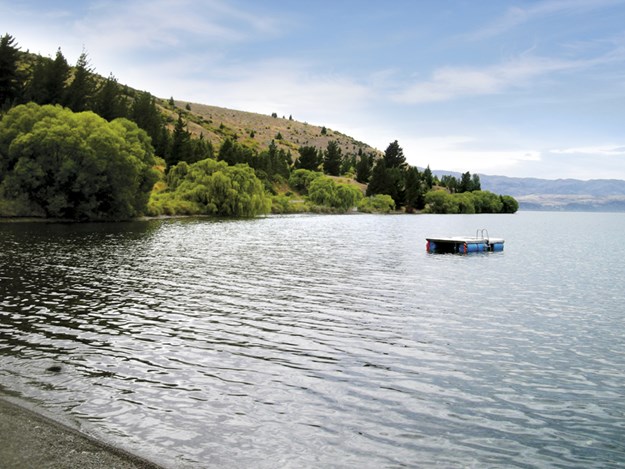 |
Swimming spot, Lake Aviemore |
Leaving Otematata for Kurow, we rode through the slightly livelier Loch Laird lakeside camping area, shaded by trees. A steep climb up to Benmore Dam tortured us and forced non-e-bike riders to walk. Far below, pines and poplars stood tall on flat land. Lake Aviemore twisted towards distant rolling brown hills, Benmore Power Station an ugly blot in the foreground.
Caravans dotted in camping grounds along Te Akatarawa Road, parallel to Lake Aviemore, had their curtains drawn. A lone camper informed us people arrive in September to claim their spot on the lakeside for the season, running through to April, purchasing an annual pass.
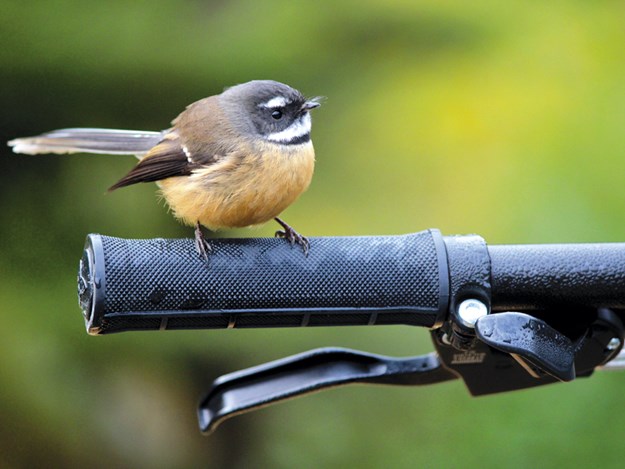
Clear waters reflecting the surrounding hills enticed. A fish, probably a trout, flashed momentarily out of the cool depths. They - and salmon - can be fished from the lakes. Rabbits darted across straw-coloured hillsides, their white tails flashing like indicators. Unlucky ones were roadkill, along with a few wallabies and possum.
The road undulated. We ate sweet red plums growing among roadside scrub. Late-blooming cerise roses dotted parched hills. A signpost on SH83 pointed to the Deep Stream Walking Track. We walked part of the narrow path overlooking a flooded canyon, purple lupins blooming alongside. Rain cut a picturesque, easy walk short.
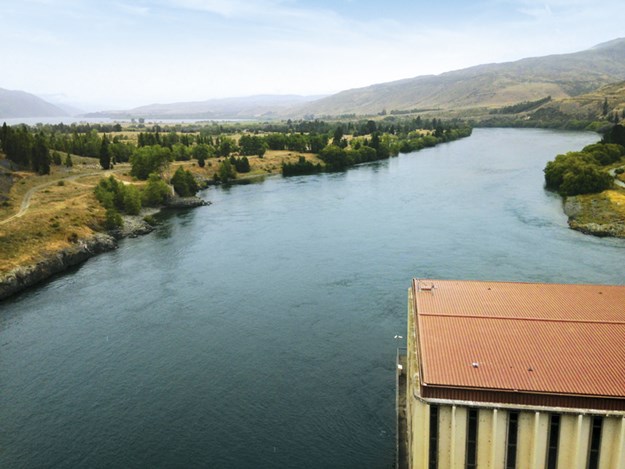 |
Aviemore Dam |
At Aviemore Dam, constructed in 1968, Lake Aviemore lay placid. I read about the channel where rainbow and brown trout spawn from May to December ensuring Lake Waitaki, on the other side of the dam, is plentifully supplied.
The quaint, chimney-ed, stone cottages - along with a lodge, the only buildings at what is signposted ‘Lake Waitaki Village’ - overlooked the lake on quiet SH83. Built for Waitaki Dam workers in 1929, they are a protected historical area. Unoccupied, they were for sale.
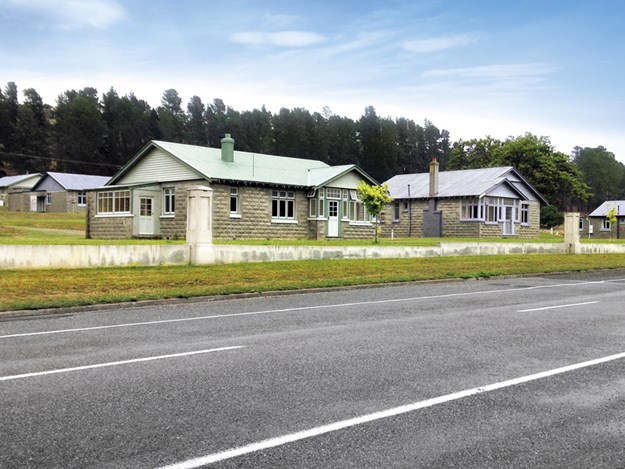 |
Lake Waitaki ‘Village’ |
The occasional long-haul truck caused wind gusts that buffeted me as I rode through a landscape sprinkled with lavender-coloured flowers and a few blazing yellowy-orange and scarlet blooms.
Discovering Kurow
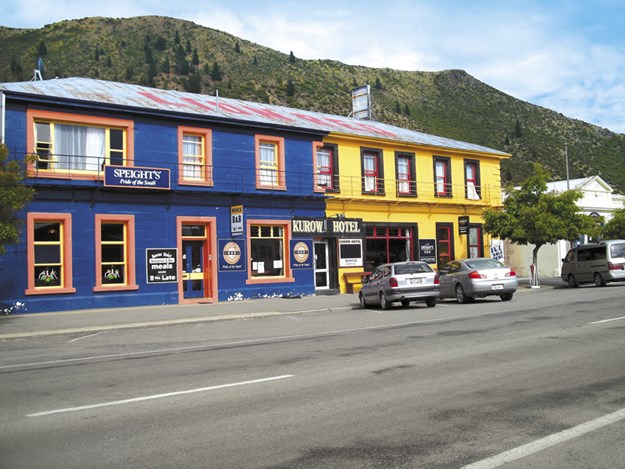 |
Main Street, Kurow |
Kurow surprised with its antique shops, cafés, museum and a Four Square. Kayakers paddled in the Waitaki River at the bottom of the Kurow Holiday Park. Visiting Kurow Museum, I discovered Richie McCaw grew up just outside town, and Kurow was the birthplace of the social-security system. There are artefacts from farming and wars, old tins, crockery, typewriters - it’s packed with relics. We spent an hour and could’ve spent longer but Duntroon-bound, it was time to cycle on.
About the area
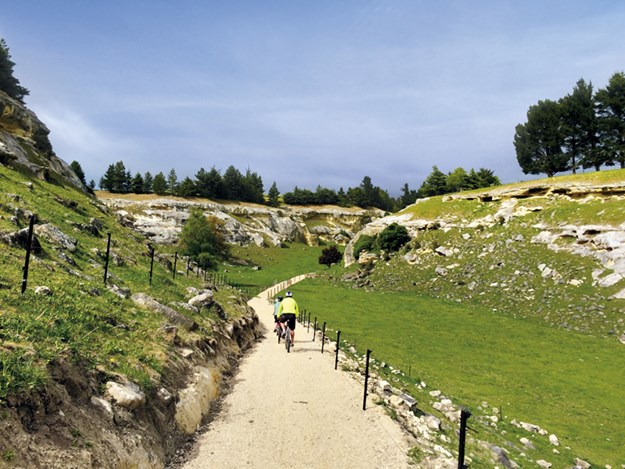 |
Anatini, near Elephant Rocks, Duntroon |
- The A2O is free to ride. We chose to book our accommodation, but trail providers can organise it all, including luggage shuttles and bike hire. If travelling over the peak summer season, book accommodation well in advance. alps2ocean.com
- Each camping ground mentioned has cabins. If holidaying with a motorhome/caravan, short return rides could be made from your base.
- If travelling with non-cyclists, there are numerous spots drivers and cyclists can meet up.
- Waimate District Council has lakeside campsites with unpowered sites, varying facilities and several boat ramps. waimatedc.govt.nz/community/camping
- Waitaki District Council camping areas: waitaki.govt.nz
- Omarama and Kurow have Four Square stores. There are limited supplies in Otematata. Prices can be expensive.
- The Ahuriri Riverbed, near Omarama, offers extensive birdlife and there are numerous fishing opportunities in the area.
- Kurow to Ōamaru is a 50-minute drive. There’s plenty to do in Ōamaru, including visiting the historic shopping district, discovering the Steampunk Museum and observing little blue and yellow-eyed penguins. Check out the vineyards, the Elephant Rocks, and the fossils at The Vanished World Centre in Duntroon on the way. In Kurow, jet-boat the Waitaki River.

